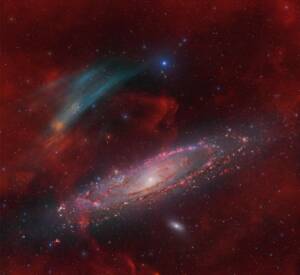
Discovery of the M31 [OIII] emission arc
Recently, a major discovery by an international team of amateur astronomers and scientists has become a huge online hit, and this new discovery is just located in one of the

Hello Logan, thanks for accepting our interview invitation. Congratulations on winning the ASIWEEK competition in week #19/2023!
My name is Logan Carpenter and I am an amateur Astrophotographer living with my family in Auckland, New Zealand. By day I am a Pathologist and spend my workdays looking down a microscope. At night, when the weather allows, I spend as much time as I can under the stars imaging the amazing objects in our Universe through my telescopes.

I have had an interest in astronomy since the 1980s, viewing the moon and planets through my father’s Meade 8-inch SCT and trying out a bit of very basic planetary photography with an Olympus OM1 camera. It wasn’t until Feb 2019 when I purchased my own 10-inch Meade SCT that I soon discovered a passion for astrophotography, amazed by the wonderous objects in the night sky that could be imaged from my very own backyard. In many ways it is like time travelling thousands and millions of light years into the past.

In Feb 2019 I purchased my Meade 10inch SCT and an iOptron AZ mount, initially taking photographs with my DSLR but it didn’t take long to discover the limitations of imaging with an AZ mount. I then purchased the iOptron CEM 60 equatorial mount and my passion for astrophotography really took off from there. Later that year I purchased my first dedicated astronomy camera, the ASI294MC Pro. Learning to image through a long focal length telescope was quite the learning curve so my advice for the beginner is to start with a more widefield setup and a good equatorial mount.

People often describe the journey of acquiring astrophotography gear as “going down the rabbit hole” and I am certainly well on my way down there. For the ASIWEEK photograph, I used my SkyWatcher Esprit 120 with the ASI2600MM Pro, Baader LRGB filters and Optolong 3nm Ha filter. I also have a Meade 10” SCT, an Askar 65PHQ and a WO Redcat 51. My main imaging cameras include the ASI2600MM Pro, ASI1600MM Pro and ASI294MC Pro.

Dark nebulae are usually best captured from dark skies so I was unsure how good the data would be imaging from my Bortle 5/6 skies at home. However, I was pleasantly surprised by the results which is a testament to the quality of the cameras and telescopes available to amateur astrophotographers these days. I captured the L, R, G, B filters on moonless nights and the Ha data on moonlit nights.

I find processing dark, dusty nebulae quite difficult compared to processing images of emission nebulae. For the CG4 image, I had to combine the Ha data with the LRGB data and used a combination of techniques in both Pixinsight (Pixelmath, etc) and Photoshop to achieve the desired result. The biggest challenge is to bring out the detail and structure of the dark dust and there are now many new tools available to us in Pixinsight to achieve this.
In Nov 2022 and again in Jan 2022, I captured fireballs on my home security camera, both traveling a similar path through the night sky. On the first occasion I was out in my front yard imaging a target in the opposite direction and missed seeing it as it passed by behind me. The plan was for a group of us to head north to try to find any fragments of the meteorite that may have survived but unfortunately severe weather and flooding in the area put an end to that.

This year I plan to spend more time imaging dark nebulae and targets which are uncommonly captured.

The most exciting time is always during the imaging session when the first exposures appear on my computer screen and I get my first inkling of the detail I’ve captured.
I think the future of astrophotography will be very exciting, largely due to the new technology being developed for our imaging setups. I’m hopeful that our cities and suburbs will think more about reducing light pollution and preserving our night skies. And I’m hoping that the many private companies planning to release thousands of satellites into orbit will take steps to reduce the impact on astronomy and astrophotography.

I have largely learnt astrophotography myself and my biggest teacher has been, funnily enough, YouTube where other astrophotographers have shared lessons learnt and processing techniques on their channels. As a result, I am now sharing my experiences by also creating videos in the hope that it might help others.
I think ZWO is producing quality dedicated astronomy cameras for the amateur Astrophotographer and have been pleased to see the company expanding their product range to include things like the AM5 mount and the ASIAIR and look forward to seeing what else is in production.

Recently, a major discovery by an international team of amateur astronomers and scientists has become a huge online hit, and this new discovery is just located in one of the
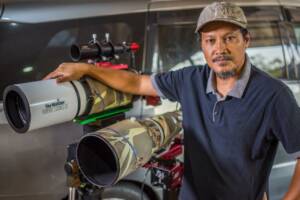
1.How It All Began I have been a fan of astronomy since high school.Starting from a school event where I can see the moon up close through a telescope.When I
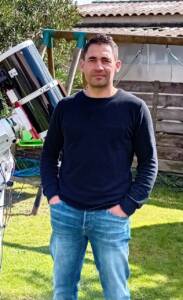
1. How It All Began For Puig Nicolas, it all started at the age of 10 with a 60/700 refractor and a 114/900 reflector. His first celestial encounters — the
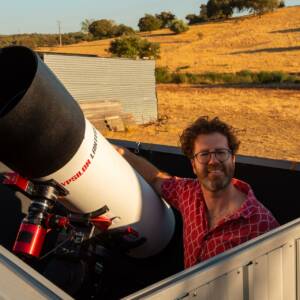
By day, David Cruz works as a digital designer. By night, he designs something far greater — images of the universe itself. “Since I was young, I was always interested

bbrown_admin, October 30, 2025 INITIAL IMPRESSIONS: The ZWO ASI585MC Air came well packaged from the manufacturer. The box is improved and has an impressive feel with a magnetic closure on
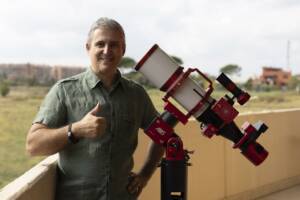
– Q3 ASIWEEK Winner Gianni Lacroce’s Astrophotography Journey Hi, I’m Gianni Lacroce, an Italian astrophotographer. My passion for the night sky began long before I owned a telescope or a